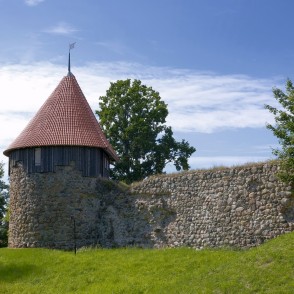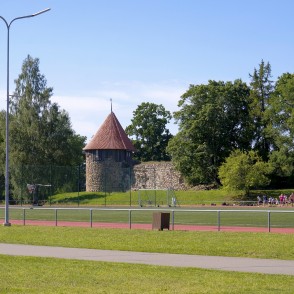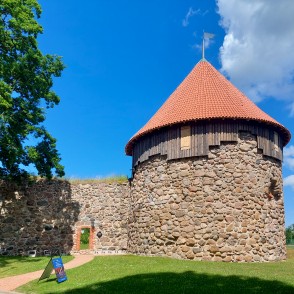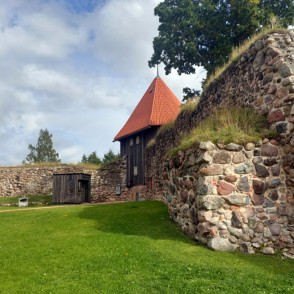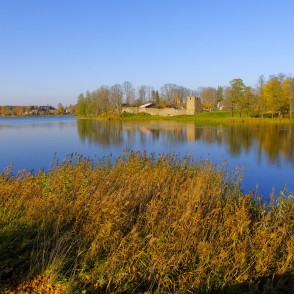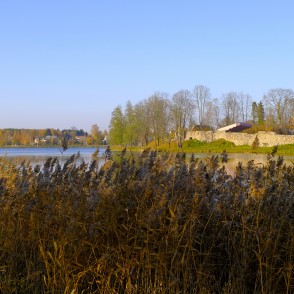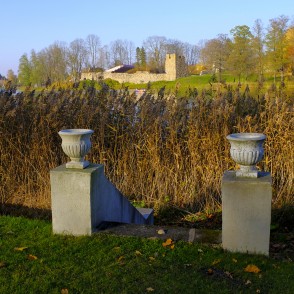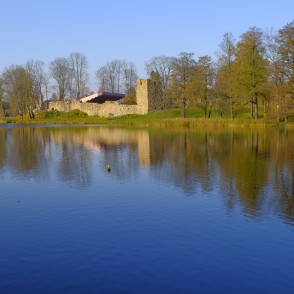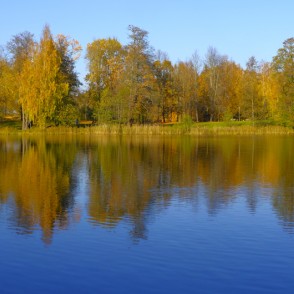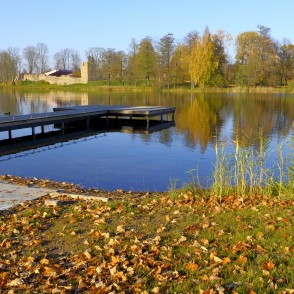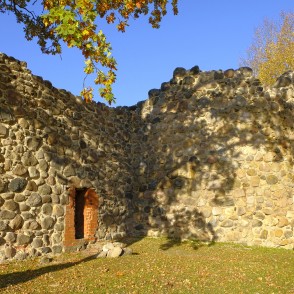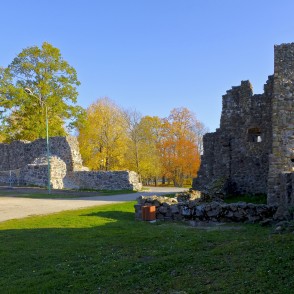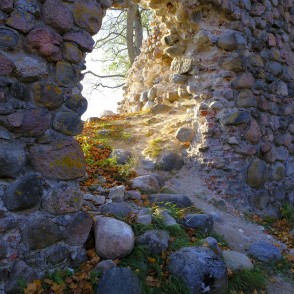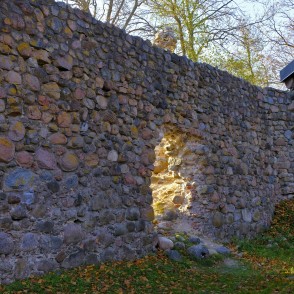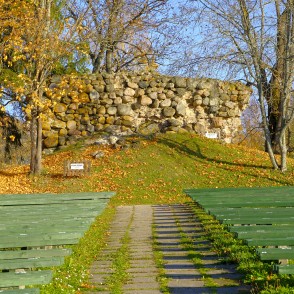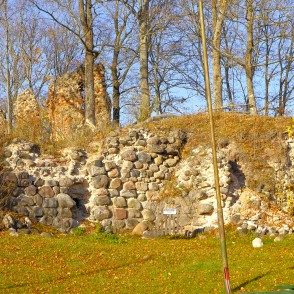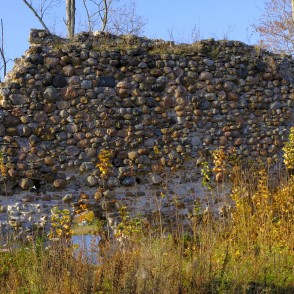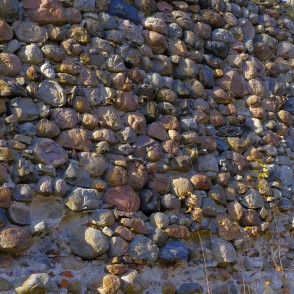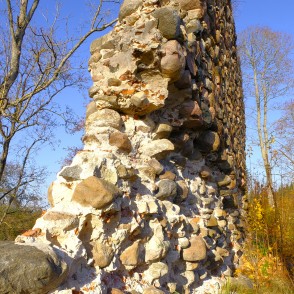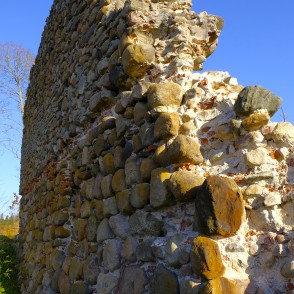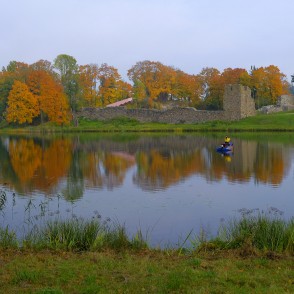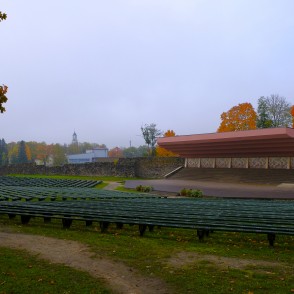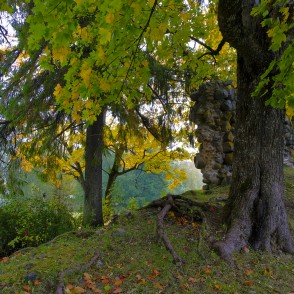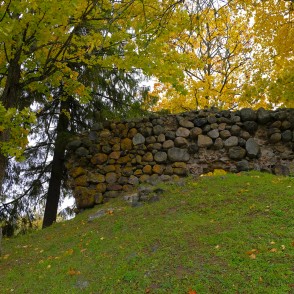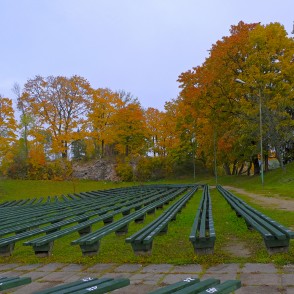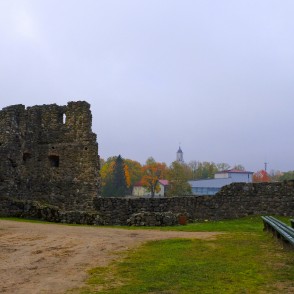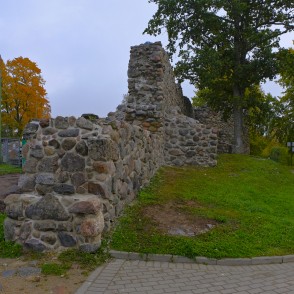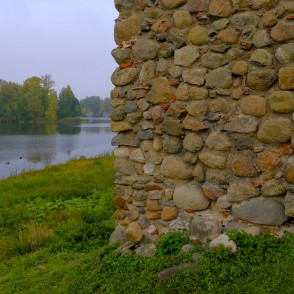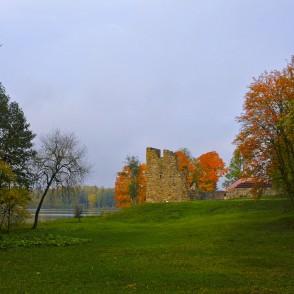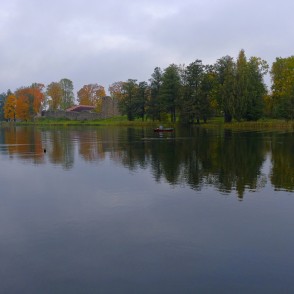Livonian Order castle ruins
In 1342, the Livonian Order completed the construction of the stone castle on the biggest island of Lake Alūksne - Castle Island. The castle was consecrated on the Annunciation day, and the place acquired a new name - Marienburg. The inhabitants of Alūksne still recall the girl, Maria, who is said to be walled in the castle, therefore the island is also called Maria Island. In the flow of the centuries, the castle was ruled by Russians, Poles and Swedes.
visitaluksne.lv
The Livonian Order built a fortified castle on the largest island in Lake Alūksne – Marijas Island (Pilssala Island) in 1342. It was linked to the land by a 120 m drawbridge. The castle had several forecastles, and it was regularly modernised and expanded until the end of the 17th century. It was one of the largest Livonian Order Castles, with similar ones found in Vastelina and Izborsk. Defensive barriers were put up around the castle, which survived until the Great Northern War. Its central part was blown up by the defeated Swedish military in 1702, after which Russians completely sacked it. All that is left are the castle ruins on the island, which is now linked to Alūksne and Temple Hill by two wooden bridges. An open-air stage alongside the castle ruins is used for various public events.
www.celotajs.lv
Alūksne Castle was built in 1342 by Teutonic Knights on the largest of the islands in the Lake Alūksne and called Marienburg (after Mary, the mother of Jesus). The first castle was constructed by the Landmeister Burkhard von Dreileben. It was part of a major reinforcement of the Eastern border of Livonia, the same year another major castle nearby (in Vastseliina) was founded as well.
The initial castle was built of wood. Later, the outer walls were constructed of fieldstone and the convent house of bricks. The plan is in many ways similar to that of Viljandi Castle, including the convent building with a flanking tower. The outer wall originates partly from the same time as the convent house, partly from later periods, notably from the time of the political tensions in early 16th century. The main gate, protected by two round towers, is also of late medieval origin. Later, at the end of 17th century, the castle was supplied with ravelines and ramparts.
The strength of the castle was repeatedly proven by repelling a number of attacks in 16th century. Alūksne was captured by the troops of Ivan IV of Russia in 1560 during the Livonian War. It was incorporated into the Polish-Lithuanian Commonwealth in 1582. The town became part of the Swedish Empire in 1629.
After the fall of the Old Livonia, the castle remained habitable. It was finally destroyed 1702 in the Great Northern War by its Swedish garrison to avoid falling in the hands of Russians. The ruins remained largely untouched. Today, it houses an open-air scene and forms a part of a recreational area of the Pils (Castle) Island.
www.spottinghistory.com

